If you’ve ever watched your bulldog struggle to catch their breath after a short walk or heard those concerning snoring sounds at night, you’re not alone. Bulldogs are some of the most lovable companions, but their adorable flat faces come with real breathing challenges. The good news? You don’t have to just accept it as “normal for the breed.”
There are proven ways to make breathing easier for your bulldog, and many of them are simpler than you think. These eight strategies can transform your dog’s quality of life, helping them sleep better, play longer, and live more comfortably.
1. The Weight-Breathing Connection Every Bulldog Owner Should Know
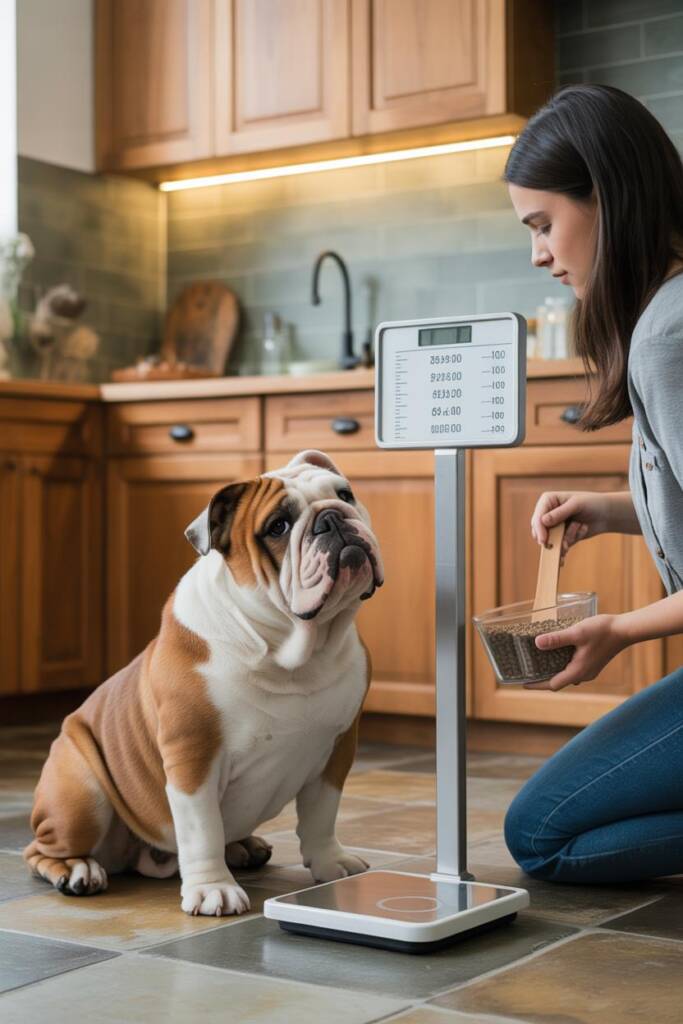
Here’s something most vets won’t tell you upfront: even five extra pounds on a bulldog can reduce their airway capacity by up to 30%. Think about it like trying to breathe through a straw while someone’s pressing on your chest. That’s what excess weight does to your bulldog’s already-compressed airways.
The challenge is that bulldogs aren’t built for marathon running, so traditional weight loss advice doesn’t work. Instead, focus on portion control and the right kind of activity. A healthy adult bulldog should weigh between 40-50 pounds (females) and 50-55 pounds (males), but more importantly, you should be able to feel their ribs without pressing hard.
Start by measuring their food with an actual measuring cup, not eyeballing it. Most bulldogs do better with two smaller meals instead of one large one, which prevents that uncomfortable “too full” feeling that makes breathing harder. For exercise, three 10-minute walks in cooler parts of the day work better than one long trek. Swimming is absolutely perfect if you have access to a pool since it builds muscle without overheating.
The real game-changer? Track their breathing rate at rest. A healthy bulldog takes 15-30 breaths per minute while sleeping. As they lose weight, you’ll see this number drop, and that’s when you know it’s working.
2. Switch to a Harness and Watch the Difference
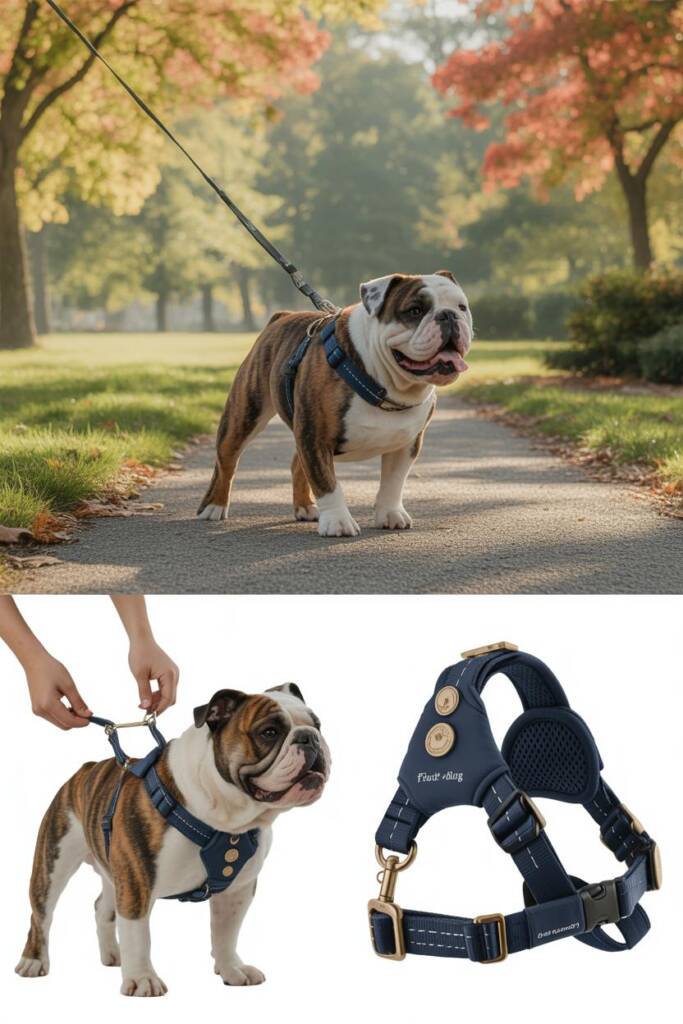
This might be the easiest change that delivers the most dramatic results. When a collar puts pressure on your bulldog’s throat during walks, it’s directly squeezing the same airway they’re already struggling to get air through. It’s like pinching a garden hose and wondering why the water flow decreased.
A properly fitted harness distributes pressure across the chest and shoulders, leaving the throat completely free. You’ll notice the difference on your very first walk—less pulling, less gasping, and no more of that choking sound when they get excited about a squirrel.
Look for a harness with a front chest clip rather than a back clip. Front clips give you better control without any pulling sensation that makes them strain against it. The harness should fit snugly enough that you can slip two fingers underneath, but not so loose that they can back out of it.
What to Look For
Padded straps are non-negotiable because they prevent rubbing on your bulldog’s sensitive skin. Adjustable straps at both the chest and belly let you customize the fit as their weight changes. And here’s a detail most people miss: the harness should sit in front of their front legs, never on top of the shoulder blades where it can restrict their natural gait.
Many bulldog owners report their dogs actually seem happier on walks after switching. That’s because they’re finally breathing comfortably while exploring the world.
3. Transform Your Home’s Air Quality in 3 Simple Steps
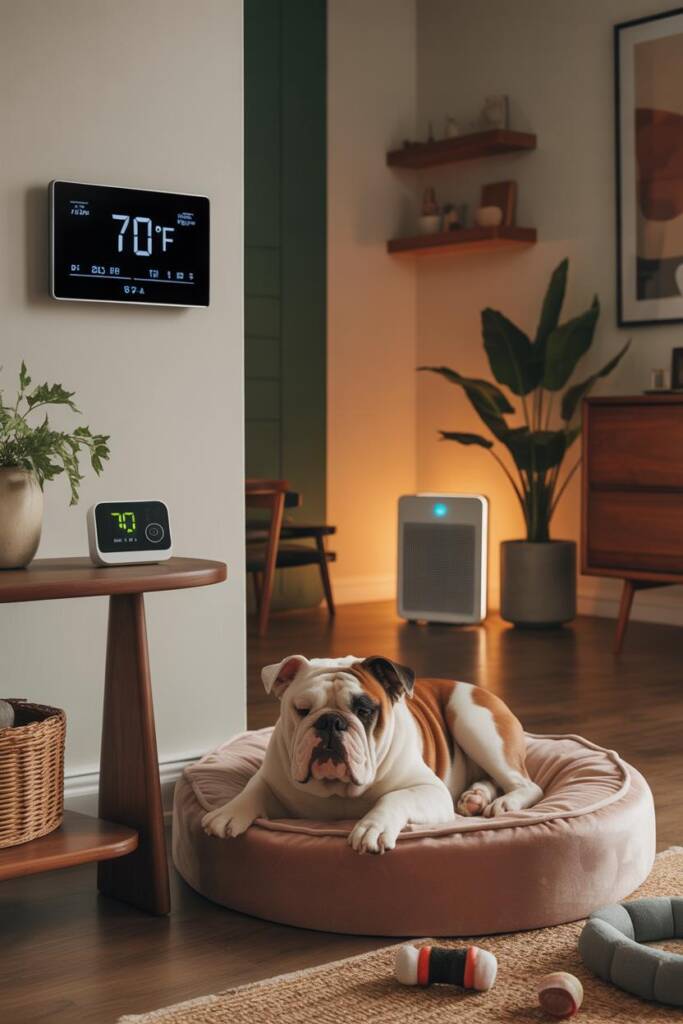
Your bulldog spends 12-14 hours a day in your home, and the air they’re breathing matters more than you might think. Bulldogs are essentially walking air quality detectors, their flat faces and narrow airways make them react to irritants that other dogs hardly notice.
The temperature sweet spot is 68-72°F. Any warmer and your bulldog’s body has to work overtime to cool down, which means faster, harder breathing. Any cooler for extended periods, and their nasal passages can become irritated. Yes, it’s a narrow range, but investing in a good thermostat pays off in easier breathing.
Humidity is the secret weapon most people overlook. Bulldogs breathe best when humidity is between 30-50%. Too dry, and their nasal passages get crusty and irritated. Too humid, and they feel like they’re breathing through a wet blanket. A simple hygrometer (under $15) lets you monitor this, and a humidifier or dehumidifier can fix it.
The third step is eliminating invisible irritants. Cigarette smoke, scented candles, air fresheners, and even some cleaning products can inflame your bulldog’s airways. Switch to fragrance-free products and notice how much less snorting and sneezing happens. If you must have scents, move to essential oil diffusers in rooms your dog doesn’t frequent, and avoid eucalyptus or tea tree oils which can be harmful to pets.
One bulldog owner described it perfectly: “I thought my dog was just a heavy breather. Turns out my vanilla candles were the problem. Three days after I stopped using them, his breathing sounded completely different.”
4. The Sleeping Position Trick That Changes Everything
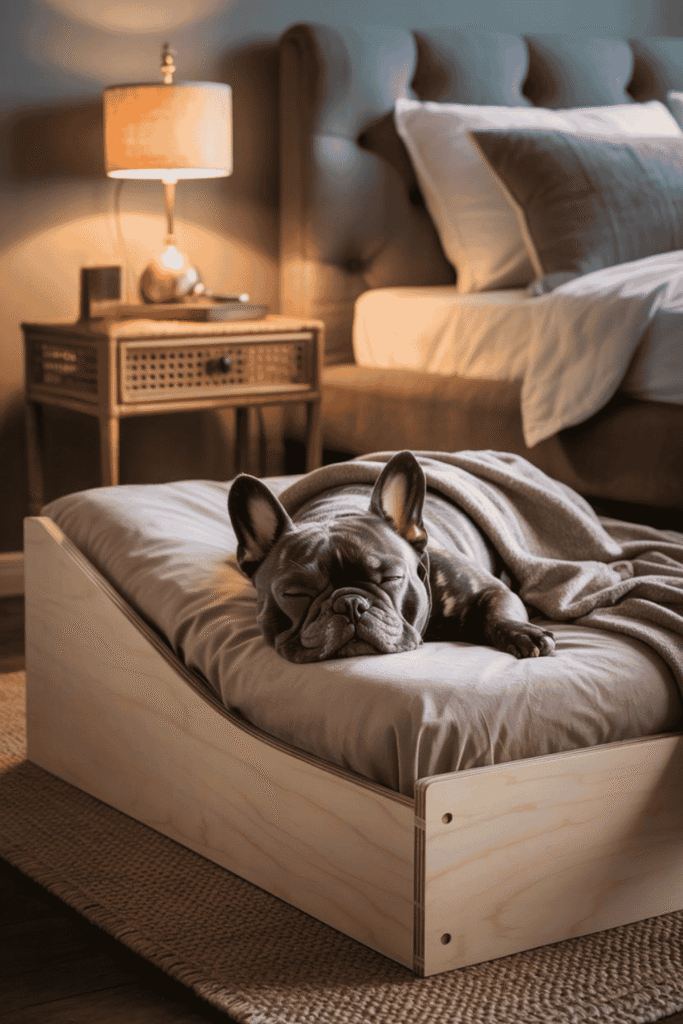
Watch your bulldog sleep tonight and you’ll probably notice something: they’re constantly adjusting, trying to find a position where breathing feels easier. That’s because lying completely flat lets their soft palate fall back into their airway. It’s like trying to sleep with someone’s hand gently resting on your throat—not painful, but definitely not comfortable.
The solution is surprisingly simple: elevation. Raising your bulldog’s head and chest by just 4-6 inches opens up their airway significantly. Think of it like how you prop yourself up with extra pillows when you have a cold—it’s the same principle.
You don’t need expensive orthopedic beds (though they’re nice). A folded blanket under the head portion of their regular bed works perfectly. Some owners use foam wedge pillows designed for humans. The key is creating a gentle slope, not a sharp angle. Your bulldog should look like they’re lounging in a recliner, not sitting upright.
The Overnight Test
Try this tonight: set up an elevated sleeping area and watch (or listen) to your bulldog sleep. Most owners report significantly less snoring, fewer wake-ups, and their dog actually sleeping in one position for longer stretches. That’s because they’re finally comfortable.
Side sleeping is also better than belly-up sleeping for breathing. If your bulldog naturally sleeps on their side, that’s great. If they’re belly-up sleepers, the elevated position becomes even more important because it prevents the tongue and soft palate from completely blocking the airway.
Some bulldogs resist change at first, but add their favorite blanket or toy to the new setup, and they usually adapt within 2-3 nights. The breathing improvement is worth the brief adjustment period.
5. Cool Air Strategies for Hot Days
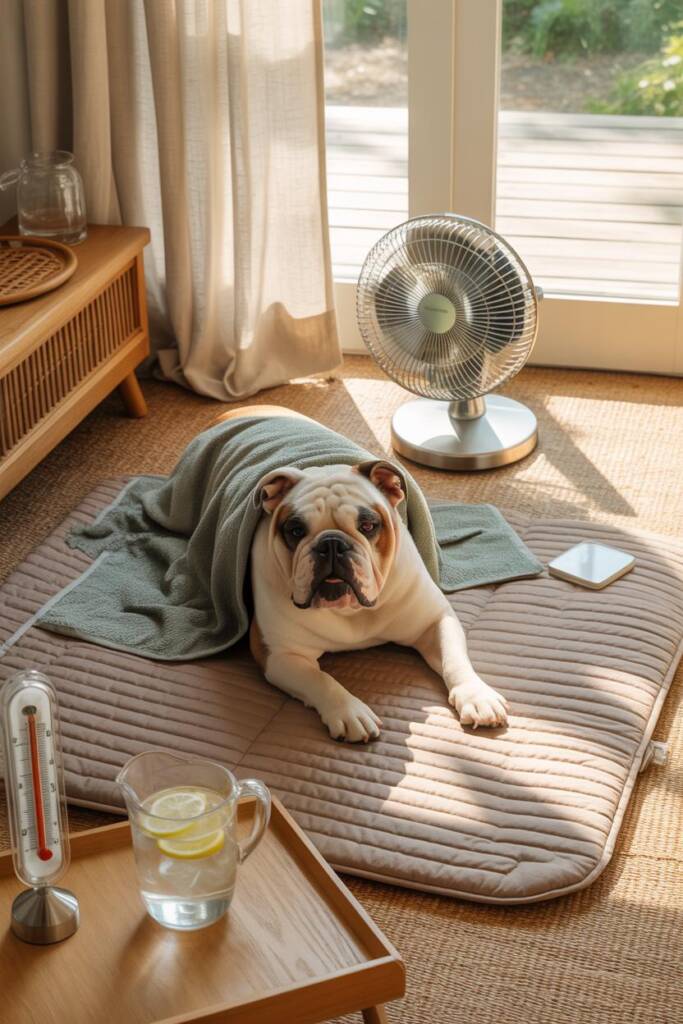
Here’s the reality: what feels like a pleasant 75°F day to you can be dangerously hot for your bulldog. Their cooling system is essentially broken by design. While other dogs pant efficiently to cool down, bulldogs are trying to cool themselves through an airway that’s already too narrow. It’s like trying to cool a car engine with a clogged radiator.
The magic number is 70°F. Above that, you need a strategy. Below that, your bulldog can handle short outdoor activities without much risk. But during summer months, this means your dog’s active life happens in early morning (before 8 AM) and late evening (after 7 PM).
Indoor cooling is where you have the most control. Tile or hardwood floors become your bulldog’s best friend because they naturally draw heat away from the body. If you have carpet, get a cooling mat. Not the gel kind that needs refrigeration, but the pressure-activated ones that stay cool through evaporation. They work for hours and don’t require any prep.
Fans matter more than you’d think. A simple floor fan pointed at your bulldog’s favorite lounging spot can drop their perceived temperature by 5-10 degrees. Just make sure it’s positioned low enough that the air actually hits them, not just blows over their head.
The Ice Water Myth
You’ve probably heard that ice water is dangerous for dogs. That’s mostly false for bulldogs. What you should avoid is letting them gulp massive amounts of cold water after exercise, which can cause stomach bloating. Instead, offer small amounts frequently. Some bulldogs love ice cubes as treats, which provides hydration and cooling in one.
A damp towel around the neck and chest works incredibly well for emergency cooling. The blood vessels are close to the surface there, so you’re literally cooling their blood before it circulates. Keep a towel in the freezer during summer months.
6. When Home Remedies Aren’t Enough: Surgery Explained
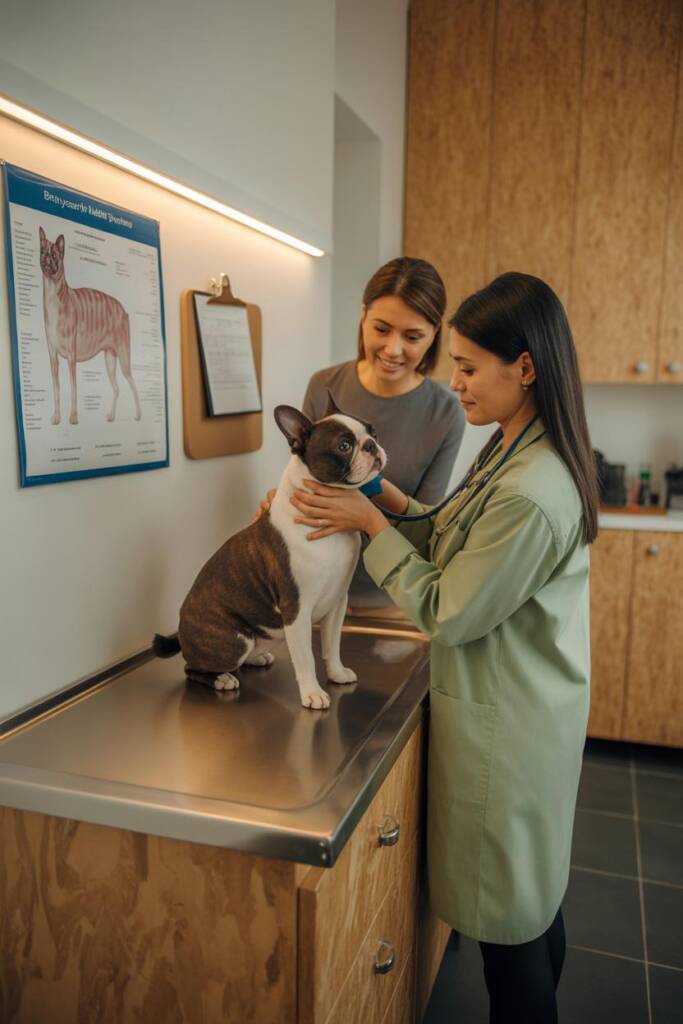
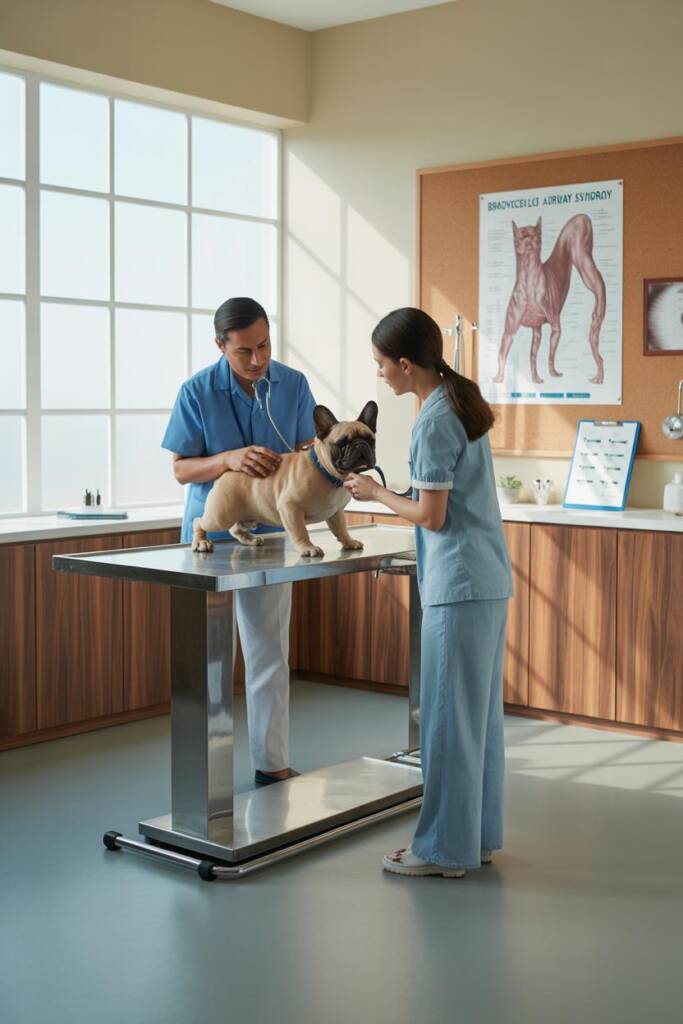
Let’s talk about the conversation most bulldog owners dread. Sometimes, despite everything you do at home, your dog’s anatomy is working against them so severely that surgery becomes the kindest option.
Brachycephalic airway surgery isn’t one procedure but usually a combination of fixes. Nostril widening (stenotic nares correction) opens the nose so air can actually enter. Soft palate reduction trims the excess tissue that’s blocking the back of the throat. Sometimes elongated tonsils need removal too.
Here are the signs that surgery might be necessary: your bulldog faints or collapses after mild activity, they have blue-tinged gums even at rest, they can’t sleep lying down at all, or their breathing sounds have gotten progressively worse despite home interventions.
The cost ranges from $1,500 to $4,000 depending on what needs to be done and where you live. Yes, it’s significant, but many owners say they wish they’d done it sooner because the quality-of-life improvement is dramatic.
Recovery Reality
Recovery takes about 2-3 weeks of restricted activity and soft food. The first few days are rough because there’s swelling from the surgery, which temporarily makes breathing even harder. But by week two, most bulldogs are breathing better than they ever have.
This isn’t about making your bulldog “perfect.” It’s about giving them a fighting chance to breathe comfortably. Some bulldogs need surgery. Some don’t. A veterinary consultation with a vet experienced in brachycephalic breeds can help you understand where your dog falls on that spectrum.
The best candidates are dogs who are already at a healthy weight and have good home management but still struggle significantly. Surgery combined with the environmental changes we’ve discussed gives the best long-term results.
7. Room-by-Room Home Environment Adjustments
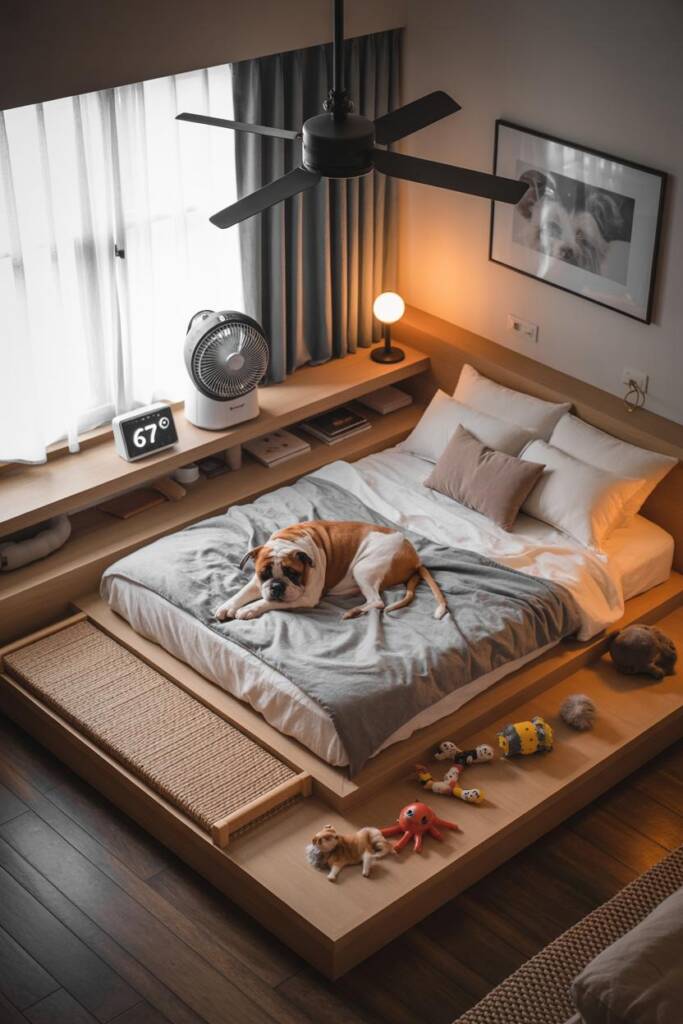
Your home setup can either help or hinder your bulldog’s breathing, and most owners don’t realize how much small changes in each room can add up to major improvements.
Start with the bedroom because that’s where your bulldog spends the longest continuous stretch. Keep it slightly cooler than the rest of the house (65-68°F is ideal for sleeping). If you use a ceiling fan, make sure it’s on because air circulation prevents stale, warm air from settling where your dog sleeps. Blackout curtains help maintain temperature and promote deeper sleep.
The living room needs good air flow but no direct drafts on your bulldog. Position their bed away from vents that blow directly on them, which can dry out nasal passages. If you have a fireplace, bulldogs should not be in the same room when it’s actively burning. The smoke particles are invisible but irritating to their airways.
Kitchen Considerations
This might surprise you, but the kitchen is often the worst room for bulldog breathing. Cooking releases oils, smoke particles, and steam into the air. Strong food smells can also trigger excess mucus production. If your bulldog hangs out in the kitchen during meal prep, crack a window or run the range hood to keep air moving.
Create a “breathing easy zone” somewhere in your home. This is one room that stays perfectly climate-controlled, has an air purifier running, and serves as your bulldog’s safe space during extreme weather or when they’re having a particularly tough breathing day. Make it their sanctuary with their best bed, favorite toys, and water bowl.
Stairs are the enemy. If you have a multi-story home, set up your bulldog’s main living area on one floor to eliminate the need for stair climbing, which forces rapid breathing and strains their system.
8. The Daily Routine That Supports Better Breathing
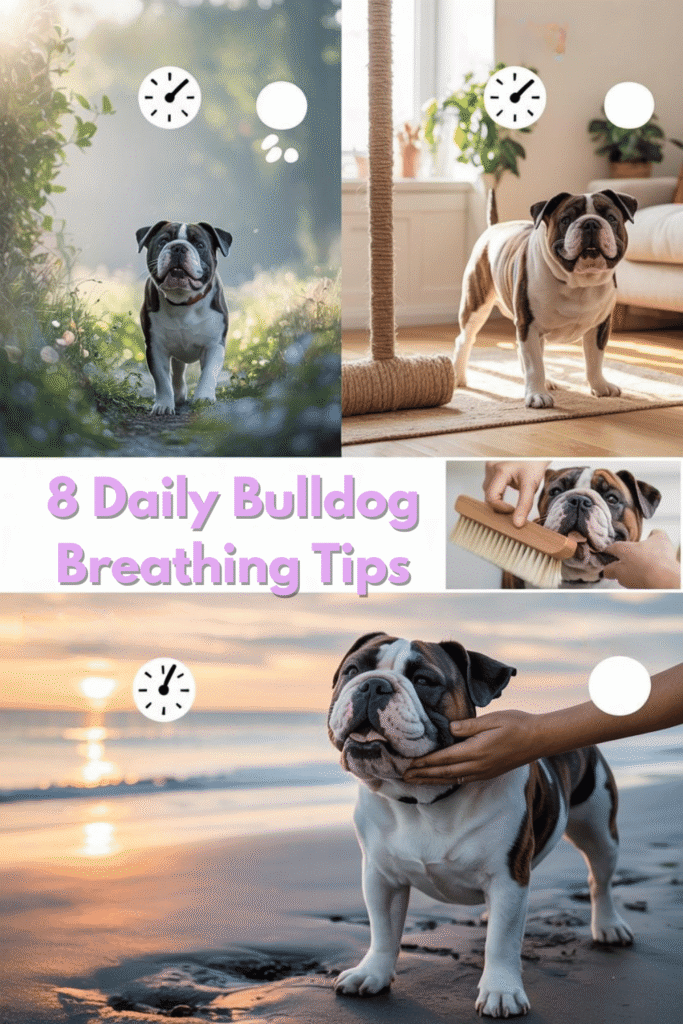
Consistency is everything for bulldogs. Their bodies struggle with sudden changes in activity, temperature, or routine because adaptation requires breathing adjustments they can’t easily make.
Build your day around the coolest hours. Morning walk at 6 AM, not 9 AM. Playtime happens indoors during midday. Evening walk at 8 PM when the sun is down. This isn’t being overprotective, it’s being realistic about your dog’s physical limitations.
Grooming directly impacts breathing more than most people realize. Those facial wrinkles trap moisture, which promotes bacterial growth, which leads to inflammation and mucus. Daily wrinkle cleaning with a damp cloth takes 60 seconds and can significantly reduce nasal congestion. Use unscented wipes or just warm water.
The Stress Connection
Stressed bulldogs breathe harder. Anxiety causes panting, which in a dog with a compromised airway, quickly becomes a vicious cycle. They can’t catch their breath, which makes them more anxious, which makes them pant more. Breaking this cycle means managing their stress.
Keep departures and arrivals low-key. No big dramatic goodbyes that get them worked up. Create predictable routines so they know what to expect. Some bulldogs benefit from calming supplements like L-theanine, but talk to your vet before adding anything.
Track your bulldog’s breathing patterns for a week. Note what makes it better and what makes it worse. You’ll start seeing patterns: maybe they breathe worse after eating certain foods, or better after spending time in a specific room. This information is gold for making targeted improvements.
The goal isn’t perfection. It’s progress. Each small adjustment compounds over time, and suddenly your bulldog is sleeping through the night, enjoying longer walks, and showing less anxiety around breathing. That’s what we’re working toward.
Shopping List: Breathing Essentials for Your Bulldog
Having the right tools makes implementing these breathing strategies effortless. Here are the must-have items that deliver real results:
- No-Pull Front-Clip Harness – Look for padded straps and multiple adjustment points. A properly fitted harness eliminates throat pressure during walks and gives you better control without any choking sensation. This single change often delivers the most immediate improvement in outdoor breathing comfort.
- Wedge Bed or Elevated Pillow – A gentle 30-degree incline keeps your bulldog’s airway open during sleep. Memory foam options provide joint support as a bonus. Many owners report their bulldogs sleep through the night for the first time after adding elevation to their bed setup.
- Cooling Mat (Pressure-Activated) – These stay cool for hours without refrigeration or electricity. They work through gel technology that activates with your dog’s body weight. Essential for managing body temperature during warm months when overheating makes breathing exponentially harder.
- Digital Thermometer/Hygrometer Combo – Knowledge is power. This inexpensive device lets you monitor the exact temperature and humidity levels in your home so you can maintain that ideal 68-72°F and 30-50% humidity range where bulldogs breathe easiest.
- HEPA Air Purifier – Removes dust, dander, and irritants from the air your bulldog breathes all day. Choose one rated for your room size and run it continuously in your dog’s main living area. The difference in air quality is measurable, and the reduction in snorting and congestion is noticeable within days.
Give Your Bulldog the Comfort They Deserve
Your bulldog didn’t choose their flat face and compressed airways, but you can choose to make their life significantly more comfortable. These eight strategies work together, each one supporting the others to create an environment where breathing becomes easier, not harder.
Start with the easiest changes first. Switch to a harness today. Adjust the thermostat tonight. Set up an elevated bed this weekend. You don’t have to implement everything at once. Even one or two changes will make a noticeable difference in how your bulldog feels.
At Sweet Purrfections, we’re passionate about helping pet lovers create homes where their furry family members thrive. Whether you’re looking for practical tips like these or inspiration for making your space more pet-friendly, we’re your go-to resource for ideas that actually work in real life.
Your bulldog’s breathing doesn’t have to be a constant worry. With the right knowledge and simple adjustments, you can help them live their best, most comfortable life.
Meet Sean, a fintech whiz with a penchant for pet purrs and blockchain buzz. After a decade of fintech feats, Sean’s tech talents leaped from ledger lines to litter lines, driven by a passion for pets and a vision for a more connected pet care community. With three critter companions as co-pilots, Sean launched this blog to share a treasury of pet-friendly tech tips and tales.



Leave a Reply